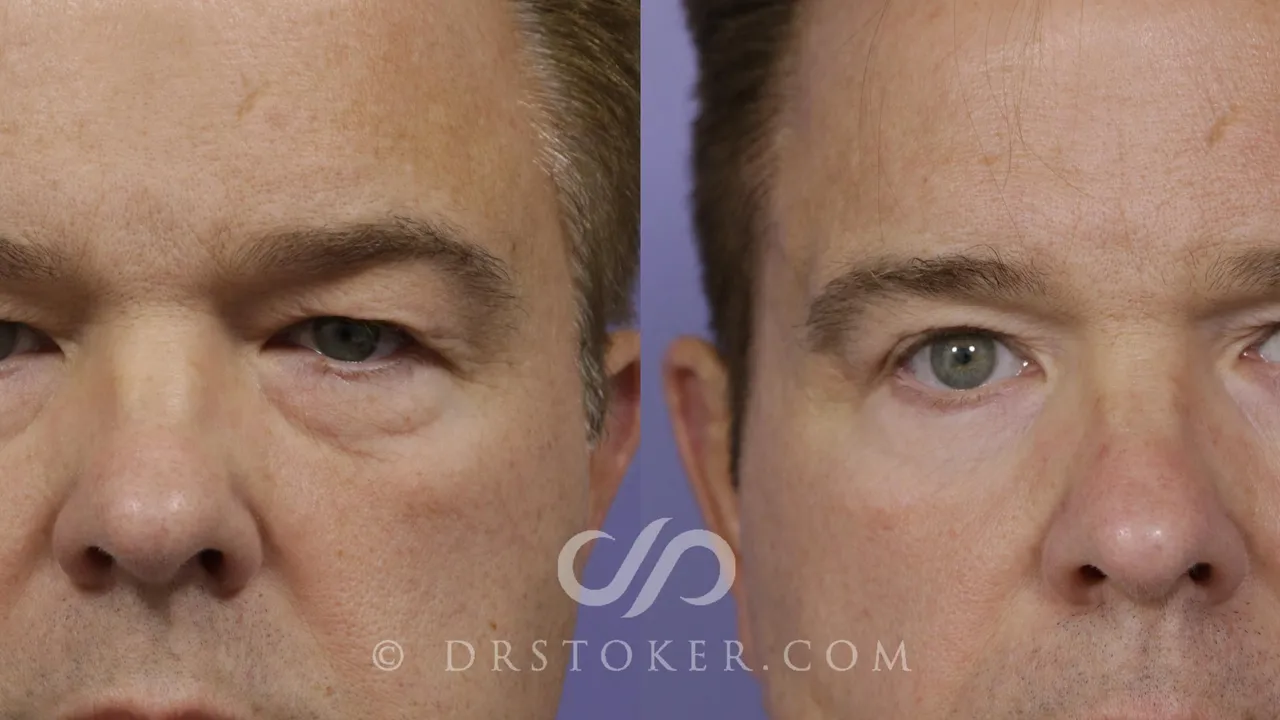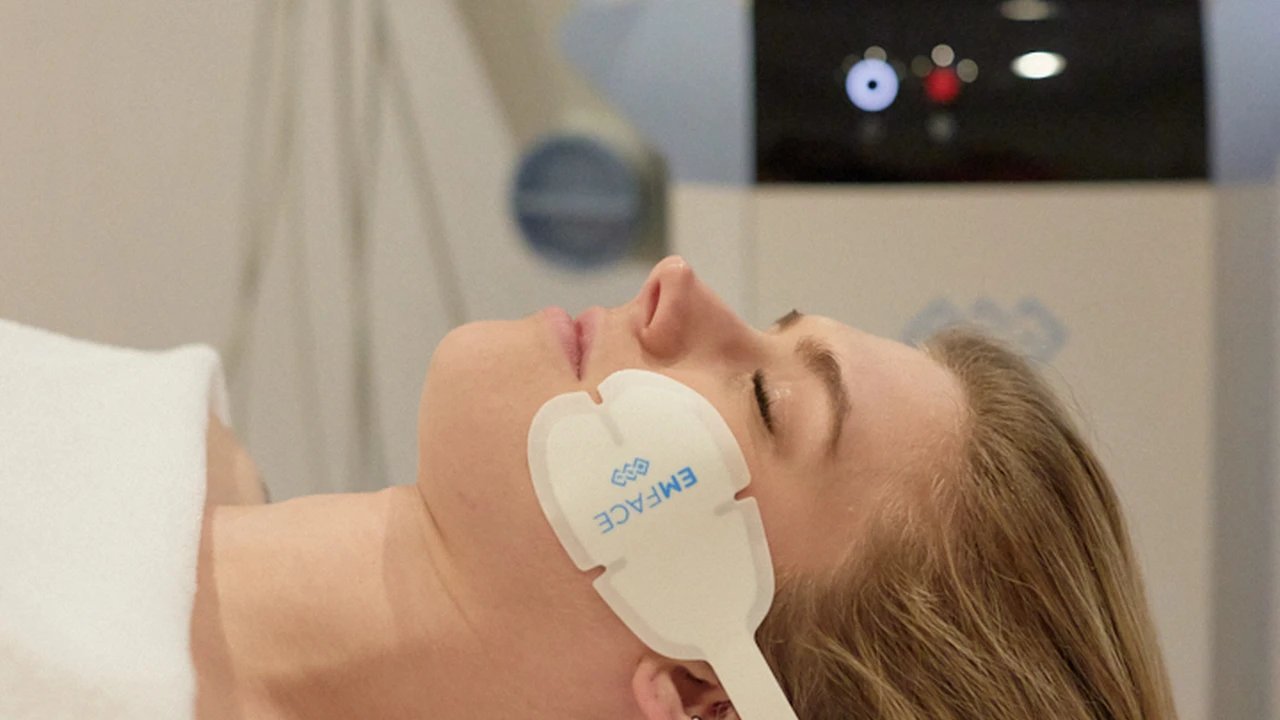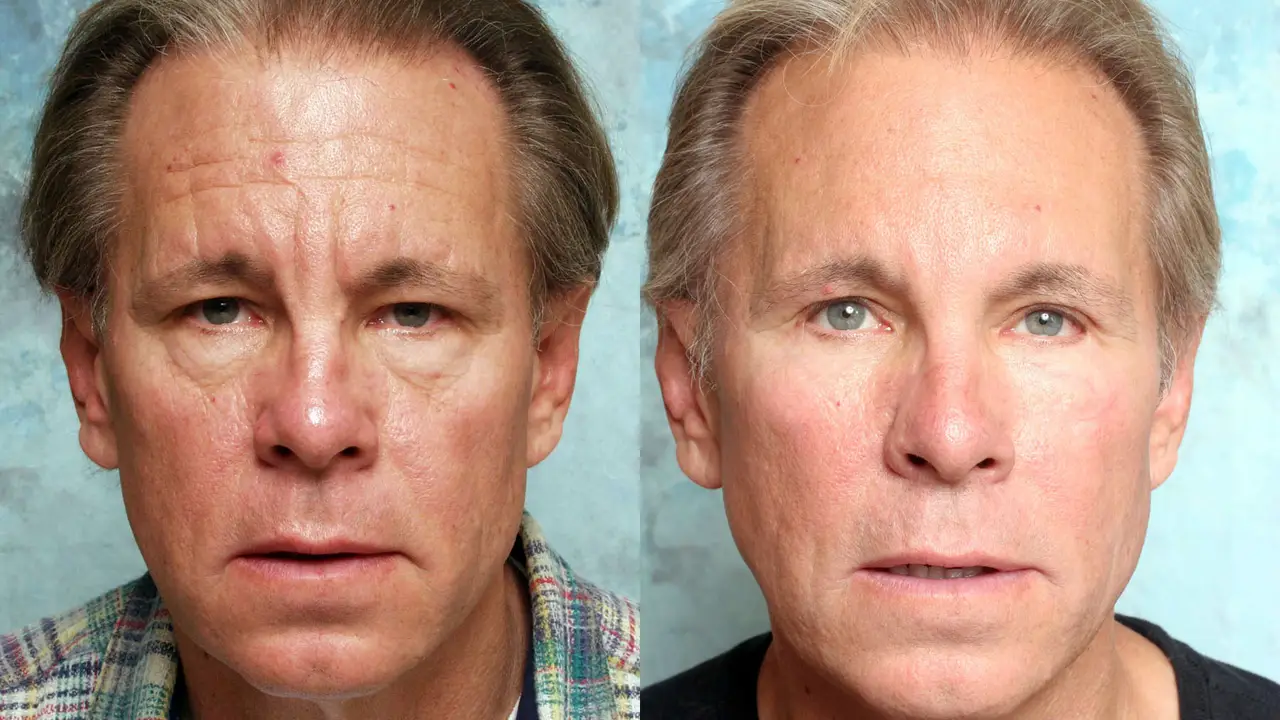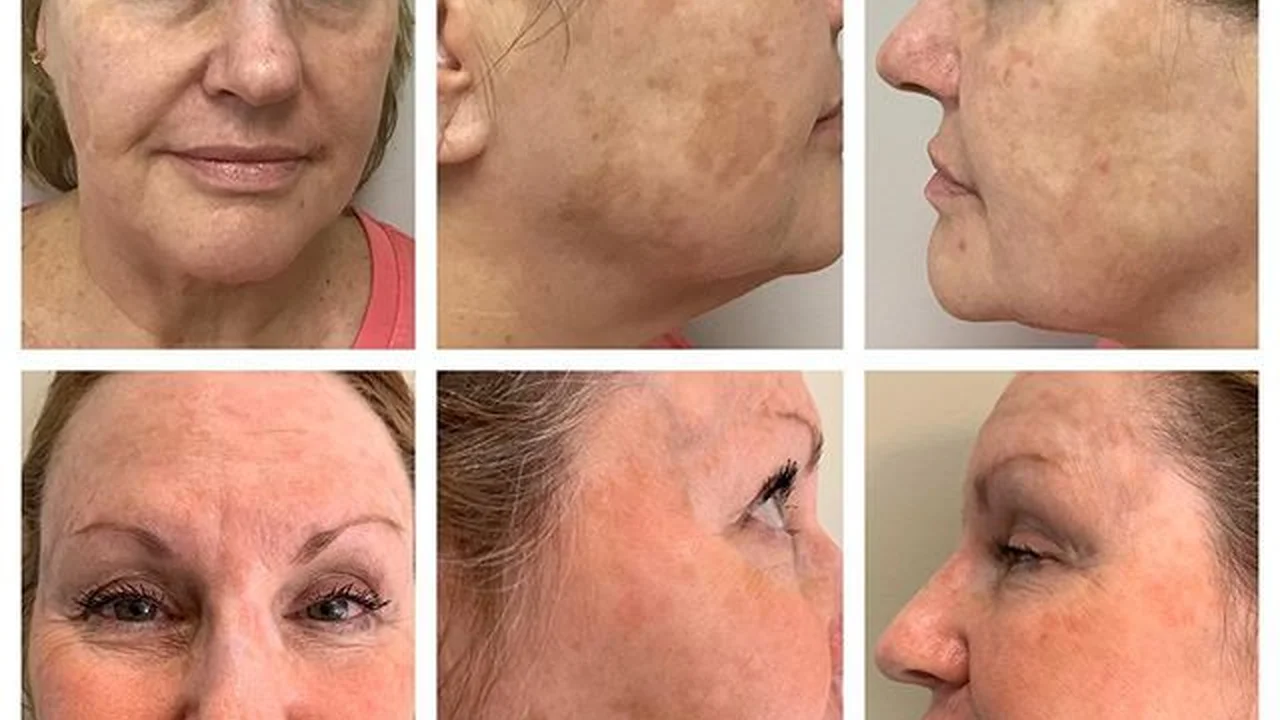Eyelid Surgery for Men: Addressing Tired Eyes

Alright gentlemen let's talk about something that might be on your mind those tired-looking eyes. You know the ones that make you look like you haven't slept in a decade even when you've had a solid eight hours? We're diving deep into male eyelid surgery also known as blepharoplasty specifically tailored for men. This isn't your average cosmetic procedure it's about subtly enhancing your appearance restoring a more youthful and energetic look without feminizing your features. Ready to learn more?
Understanding Male Blepharoplasty What You Need To Know
Blepharoplasty isn't just about removing wrinkles it's a nuanced procedure. For men it requires a keen understanding of masculine facial anatomy. We're talking about preserving the strong brow line avoiding a hollowed-out appearance and maintaining a natural masculine contour. The goal is to refresh your look not to drastically alter it. Think subtle refinement not a complete transformation.
There are two main types of blepharoplasty:
- Upper Eyelid Blepharoplasty: This focuses on removing excess skin and fat from the upper eyelids. This can address hooded eyelids making you look more alert and awake.
- Lower Eyelid Blepharoplasty: This targets bags under the eyes and excess skin. It can also address dark circles by repositioning or removing fat.
Sometimes a combination of both upper and lower blepharoplasty is recommended for optimal results. It's all about assessing your individual needs and goals with a qualified surgeon.
Why Men Choose Eyelid Surgery Addressing Specific Concerns
Men often seek eyelid surgery for a variety of reasons all stemming from a desire to look their best and feel more confident. Here are some common concerns:
- Tired Appearance: This is the big one. Drooping eyelids and under-eye bags can make you look perpetually exhausted even when you're not.
- Ageing Eyes: As we age the skin around our eyes loses elasticity leading to wrinkles and sagging. This can make you look older than you feel.
- Vision Obstruction: In severe cases drooping upper eyelids can actually obstruct your vision. Blepharoplasty can improve both your appearance and your sight.
- Professional Image: In today's competitive world looking refreshed and alert can be an asset. Eyelid surgery can help you project confidence and competence.
It's important to be honest with yourself about your motivations for considering eyelid surgery. A clear understanding of your goals will help you communicate effectively with your surgeon and achieve the best possible outcome.
Finding The Right Surgeon For Male Eyelid Rejuvenation
Choosing the right surgeon is paramount. You need someone with extensive experience in male facial rejuvenation specifically blepharoplasty. Don't be afraid to do your research and ask questions.
Here are some key factors to consider:
- Board Certification: Ensure your surgeon is board-certified in plastic surgery or a related specialty. This indicates they have met rigorous training and competency standards.
- Experience with Male Blepharoplasty: Ask about their experience performing blepharoplasty on men. Look for before-and-after photos of male patients to assess their aesthetic sensibility.
- Communication Skills: Choose a surgeon who listens to your concerns explains the procedure clearly and answers your questions thoroughly. You should feel comfortable and confident in their care.
- Hospital Affiliations: Check if the surgeon has hospital affiliations. This can be an indicator of their standing in the medical community.
- Reviews and Testimonials: Read online reviews and testimonials from previous patients. This can give you valuable insights into their experience with the surgeon.
Schedule consultations with several surgeons before making a decision. This will give you the opportunity to meet them discuss your goals and assess their suitability.
The Eyelid Surgery Procedure What To Expect
So what actually happens during eyelid surgery? Let's break it down:
- Anesthesia: Blepharoplasty is typically performed under local anesthesia with sedation or general anesthesia. Your surgeon will discuss the best option for you.
- Incision Placement: Incisions are typically made in the natural creases of the eyelids to minimize scarring. For upper eyelid surgery the incision is made in the crease of the upper eyelid. For lower eyelid surgery the incision can be made just below the eyelashes or inside the lower eyelid (transconjunctival approach).
- Tissue Removal or Repositioning: Excess skin fat and muscle are removed or repositioned as needed. The surgeon carefully sculpts the eyelids to achieve the desired result.
- Closure: The incisions are closed with sutures. These sutures are typically removed within a week after surgery.
The entire procedure usually takes one to three hours depending on the extent of the surgery. You'll likely be able to go home the same day.
Recovery After Eyelid Surgery Managing Expectations
Recovery is a crucial part of the process. Here's what you can expect:
- Swelling and Bruising: Swelling and bruising are normal after eyelid surgery. They typically peak within a few days and gradually subside over the next week or two.
- Discomfort: You may experience some discomfort after surgery which can be managed with pain medication.
- Vision Changes: You may experience temporary blurred vision or sensitivity to light. This usually resolves within a few days.
- Activity Restrictions: You'll need to avoid strenuous activities for several weeks after surgery. Your surgeon will provide specific instructions.
- Follow-up Appointments: You'll have follow-up appointments with your surgeon to monitor your progress and remove sutures.
It's important to follow your surgeon's instructions carefully to ensure a smooth and successful recovery. Be patient and allow your body time to heal.
Risks and Complications of Eyelid Surgery Understanding Potential Issues
Like any surgical procedure blepharoplasty carries some risks and potential complications. These are rare but it's important to be aware of them:
- Infection: Infection is a risk with any surgery. Your surgeon will take precautions to minimize this risk.
- Bleeding: Excessive bleeding is another potential complication.
- Dry Eyes: Dry eyes are a common temporary side effect of eyelid surgery. Artificial tears can help alleviate this.
- Ectropion: Ectropion is a condition in which the lower eyelid turns outward. This is a rare but potentially serious complication.
- Asymmetry: Asymmetry in the eyelids is possible although surgeons strive to achieve symmetry.
- Scarring: Scarring is inevitable with any surgery but surgeons take steps to minimize scarring.
- Vision Loss: Vision loss is an extremely rare but potentially devastating complication.
Your surgeon will discuss these risks and complications with you in detail during your consultation. It's important to weigh the risks and benefits of surgery before making a decision.
Beyond Surgery Non-Surgical Options For Tired Eyes
While blepharoplasty is the gold standard for addressing significant eyelid sagging and under-eye bags there are also non-surgical options that can provide some improvement.
- Dermal Fillers: Dermal fillers can be injected into the tear troughs (the area under the eyes) to fill in hollows and reduce the appearance of dark circles.
- Botox: Botox can be injected into the crow's feet area to relax the muscles and reduce wrinkles.
- Laser Resurfacing: Laser resurfacing can improve skin texture and reduce wrinkles around the eyes.
- Chemical Peels: Chemical peels can exfoliate the skin and improve its appearance.
- Skincare Products: Certain skincare products containing ingredients like retinol peptides and antioxidants can help improve skin elasticity and reduce the appearance of wrinkles.
These non-surgical options can provide subtle improvements but they are not a substitute for surgery. They are best suited for individuals with mild to moderate signs of aging around the eyes.
The Cost of Male Eyelid Surgery Investing In Your Appearance
The cost of eyelid surgery can vary depending on several factors including:
- Surgeon's Fees: Surgeon's fees vary based on their experience and reputation.
- Anesthesia Fees: Anesthesia fees depend on the type of anesthesia used.
- Facility Fees: Facility fees cover the cost of using the operating room.
- Pre-operative and Post-operative Care: These fees cover the cost of consultations follow-up appointments and medications.
On average eyelid surgery can cost anywhere from $3000 to $8000. It's important to get a detailed cost estimate from your surgeon before proceeding with surgery.
Insurance typically does not cover cosmetic eyelid surgery. However if your vision is obstructed by drooping eyelids insurance may cover the cost of upper eyelid blepharoplasty.
Product Recommendations For Post-Operative Care And Maintenance
After eyelid surgery proper post-operative care is crucial for optimal healing and results. Here are some recommended products:
- Artificial Tears: Artificial tears are essential for keeping your eyes lubricated and preventing dryness. Look for preservative-free options. Example: Systane Ultra Preservative-Free Lubricant Eye Drops (Pricing: ~$15-$20). Use case: Apply several times a day as needed to relieve dryness.
- Cold Compresses: Cold compresses can help reduce swelling and bruising. Example: Reusable Gel Ice Pack (Pricing: ~$10-$15). Use case: Apply for 15-20 minutes at a time several times a day during the first few days after surgery.
- Sunscreen: Sunscreen is essential for protecting your skin from sun damage. Choose a broad-spectrum sunscreen with an SPF of 30 or higher. Example: EltaMD UV Clear Broad-Spectrum SPF 46 (Pricing: ~$35-$40). Use case: Apply liberally to the skin around your eyes every morning and reapply throughout the day.
- Scar Cream: Scar cream can help minimize scarring. Look for creams containing ingredients like silicone or vitamin E. Example: Mederma Advanced Scar Gel (Pricing: ~$20-$25). Use case: Apply to the incisions twice a day after the sutures have been removed.
- Gentle Cleanser: Use a gentle cleanser to clean your face and eyelids. Avoid harsh soaps or scrubs. Example: Cetaphil Gentle Skin Cleanser (Pricing: ~$10-$15). Use case: Gently cleanse your face and eyelids twice a day.
Product Comparisons For Optimal Results Post Eyelid Surgery
Let's compare a few products in each category to help you make informed choices:
Artificial Tears:
- Systane Ultra Preservative-Free: Excellent for dry eye relief. Preservative-free which is ideal for post-surgery.
- Refresh Tears: Another good option for dry eye relief. Contains preservatives but generally well-tolerated.
- Blink Tears: Specifically formulated for contact lens wearers but also effective for dry eye relief after surgery.
Cold Compresses:
- Reusable Gel Ice Pack: Versatile and reusable. Can be easily chilled in the freezer.
- Instant Cold Pack: Convenient for on-the-go use. Activated by squeezing the pack.
- Eye Mask with Gel Inserts: Specifically designed for the eyes. Provides targeted cooling relief.
Sunscreen:
- EltaMD UV Clear Broad-Spectrum SPF 46: Oil-free and non-comedogenic. Ideal for sensitive skin.
- La Roche-Posay Anthelios Melt-In Sunscreen Milk SPF 60: Broad-spectrum protection with a lightweight texture.
- Supergoop! Unseen Sunscreen SPF 40: Invisible gel formula that's perfect for wearing under makeup.
Lifestyle Adjustments To Maintain A Youthful Look After Eyelid Surgery
Eyelid surgery can provide a significant improvement in your appearance but it's not a magic bullet. To maintain a youthful look long-term it's important to make some lifestyle adjustments.
- Sun Protection: Protect your skin from sun damage by wearing sunscreen sunglasses and a hat whenever you're outdoors.
- Healthy Diet: Eat a healthy diet rich in fruits vegetables and antioxidants. This will help nourish your skin and keep it looking its best.
- Regular Exercise: Regular exercise improves circulation and promotes overall health which can benefit your skin.
- Adequate Sleep: Get enough sleep to allow your body to repair and rejuvenate.
- Stress Management: Manage stress through relaxation techniques like yoga meditation or deep breathing.
- Hydration: Drink plenty of water to keep your skin hydrated.
- Avoid Smoking: Smoking damages the skin and accelerates aging.
- Limit Alcohol Consumption: Excessive alcohol consumption can dehydrate the skin and contribute to wrinkles.
- Skincare Routine: Establish a consistent skincare routine that includes cleansing moisturizing and using targeted treatments like retinol or vitamin C.
Male Eyelid Surgery Real Patient Stories And Testimonials
Hearing from other men who have undergone eyelid surgery can be incredibly helpful. Here are some fictionalized but realistic stories:
John 45 Business Executive: "I was tired of looking tired. My drooping eyelids made me look older and less energetic than I felt. Eyelid surgery was a game-changer. I look and feel so much more confident. The recovery was easier than I expected and the results are natural and subtle."
David 52 Teacher: "I had bags under my eyes that just wouldn't go away no matter how much sleep I got. They made me look constantly exhausted. Eyelid surgery removed the bags and I look much more refreshed. My students even commented that I looked younger!"
Michael 60 Retired Engineer: "My drooping upper eyelids were starting to obstruct my vision. Eyelid surgery not only improved my appearance but also improved my eyesight. I can see so much better now and I look younger too!"
These stories highlight the positive impact that eyelid surgery can have on men's lives. It's important to remember that everyone's experience is unique but these testimonials provide a glimpse into the potential benefits.
Long Term Effects Of Eyelid Surgery Maintaining Results Over Time
While eyelid surgery offers long-lasting results the aging process continues. Here's how to maximize the longevity of your results:
- Sun Protection: Consistent sun protection is paramount to preventing further skin damage and maintaining the results of your surgery.
- Skincare: A good skincare routine with retinoids antioxidants and peptides can help maintain skin elasticity and reduce wrinkles.
- Lifestyle: A healthy lifestyle including a balanced diet regular exercise and adequate sleep will contribute to overall skin health and longevity.
- Non-Surgical Touch-Ups: Consider non-surgical touch-ups like dermal fillers or Botox to address any new wrinkles or volume loss that may develop over time.
- Regular Check-Ups: Schedule regular check-ups with your surgeon to monitor your results and discuss any concerns.
By following these tips you can help maintain the results of your eyelid surgery for many years to come.
Addressing Common Misconceptions About Male Eyelid Surgery
There are several common misconceptions about male eyelid surgery that need to be addressed:
- Misconception: Eyelid surgery will feminize my face. Reality: A skilled surgeon understands male facial anatomy and will tailor the procedure to maintain masculine features.
- Misconception: Eyelid surgery leaves noticeable scars. Reality: Incisions are typically made in the natural creases of the eyelids to minimize scarring. Scars usually fade significantly over time.
- Misconception: Eyelid surgery is only for women. Reality: Men can benefit greatly from eyelid surgery to address tired-looking eyes and restore a more youthful appearance.
- Misconception: Eyelid surgery is a major surgery with a long recovery. Reality: Eyelid surgery is typically performed on an outpatient basis and the recovery is relatively short.
- Misconception: Eyelid surgery is too expensive. Reality: While eyelid surgery is an investment it can provide long-lasting benefits and improve your confidence.
Male Eyelid Surgery Alternatives Compared Which Is Right For You
Let's compare eyelid surgery to some common alternatives:
- Eyelid Surgery (Blepharoplasty): Best for significant sagging skin and fat deposits. Provides long-lasting results. More invasive with a longer recovery.
- Dermal Fillers: Best for filling in tear troughs and reducing the appearance of dark circles. Provides temporary results (6-12 months). Less invasive with minimal downtime.
- Botox: Best for reducing crow's feet and wrinkles around the eyes. Provides temporary results (3-6 months). Less invasive with minimal downtime.
- Laser Resurfacing: Best for improving skin texture and reducing wrinkles. Can provide longer-lasting results than fillers or Botox but less dramatic than surgery. More invasive than fillers or Botox but less invasive than surgery.
- Chemical Peels: Best for exfoliating the skin and improving its appearance. Provides temporary results. Less invasive than laser resurfacing.
The best option for you will depend on your individual needs and goals. Consult with a qualified surgeon or dermatologist to determine the most appropriate treatment.
Questions To Ask Your Surgeon During Your Consultation
During your consultation with a surgeon it's important to ask questions to ensure you're making an informed decision. Here are some key questions to ask:
- What is your experience with male blepharoplasty?
- Can I see before-and-after photos of your male patients?
- What type of anesthesia do you recommend?
- Where will the surgery be performed?
- What are the risks and complications of the surgery?
- What is the recovery process like?
- How much does the surgery cost?
- What are your payment options?
- What are your qualifications and board certifications?
- What results can I realistically expect?
Don't be afraid to ask any questions you have no matter how small they may seem. Your surgeon should be happy to answer your questions and address your concerns.
The Future Of Facial Rejuvenation For Men What's On The Horizon
The field of facial rejuvenation is constantly evolving. Here are some exciting advancements on the horizon:
- New Minimally Invasive Techniques: Researchers are developing new minimally invasive techniques for eyelid surgery that can reduce scarring and recovery time.
- Advanced Dermal Fillers: New dermal fillers are being developed that provide longer-lasting and more natural-looking results.
- Personalized Skincare: Advances in genetic testing are leading to personalized skincare products that are tailored to your individual skin type and needs.
- Regenerative Medicine: Researchers are exploring the use of stem cells and other regenerative medicine techniques to rejuvenate the skin and tissues around the eyes.
The future of facial rejuvenation for men is bright. With continued advancements in technology and techniques men will have more options than ever before to maintain a youthful and refreshed appearance.
:max_bytes(150000):strip_icc()/277019-baked-pork-chops-with-cream-of-mushroom-soup-DDMFS-beauty-4x3-BG-7505-5762b731cf30447d9cbbbbbf387beafa.jpg)






